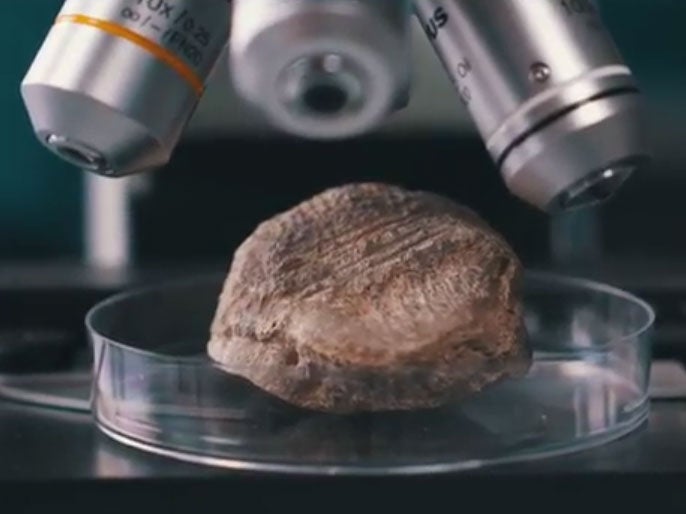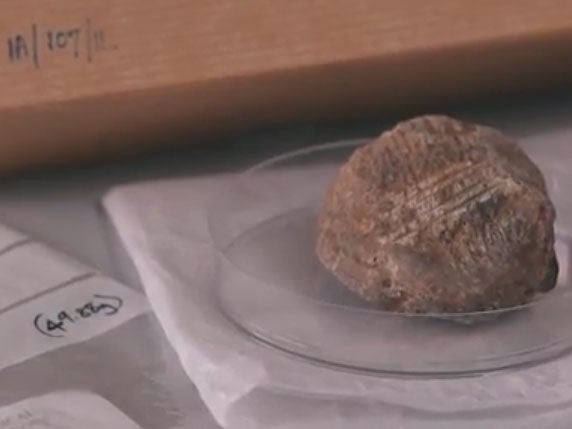Butchered bear bone reveals human history in Ireland began 2,500 years earlier than thought
Radiocarbon dating of a brown bear’s knee bone suggested it had been killed by a human 12,500 years ago

Your support helps us to tell the story
From reproductive rights to climate change to Big Tech, The Independent is on the ground when the story is developing. Whether it's investigating the financials of Elon Musk's pro-Trump PAC or producing our latest documentary, 'The A Word', which shines a light on the American women fighting for reproductive rights, we know how important it is to parse out the facts from the messaging.
At such a critical moment in US history, we need reporters on the ground. Your donation allows us to keep sending journalists to speak to both sides of the story.
The Independent is trusted by Americans across the entire political spectrum. And unlike many other quality news outlets, we choose not to lock Americans out of our reporting and analysis with paywalls. We believe quality journalism should be available to everyone, paid for by those who can afford it.
Your support makes all the difference.A butchered bear bone found in an Irish cave has revealed humans were active in Ireland 2,500 years earlier than thought, in a breakthrough described as “a new chapter to the human history of Ireland”.
Since the 1970s, the oldest evidence of human occupation in Ireland dated back to 8,000 BC – the Mesolithic period – indicating humans had occupied the island for some 10,000 years.
However, radiocarbon dating of a brown bear’s knee bone suggested it had been killed by a human some 12,500 years ago, in the preceding Paleolithic period, at 10,500 BC.
The adult bear bone, marked by seven cuts from a long blade, was originally discovered in 1903 by a team of early scientists in a County Clare cave and had been stored in a card board box at the National Museum of Ireland for almost 100 years.
In 2010 and 2011 Dr Ruth Carden, a research associate with the National Museum of Ireland, and Dr Marion Dowd, a lecturer in Prehistoric Archaeology at the School of science in IT Sligo, re-analysed the bear bone, which was one of thousands discovered at the turn of the century.
The pair then applied for funding to have the bone carbon dated.
“When a Palaeolithic date was returned, it came as quite a shock,” said Dr Dowd. “Here we had evidence of someone butchering a brown bear carcass and cutting through the knee probably to extract the tendons.”

“Yes, we expected a prehistoric date, but the Palaeolithic result took us completely by surprise.”
A second sample was sent to the University of Oxford, confirming its age; while independent analyses by three specialists determined the cut marks had been made in fresh bone, indicating both the marks and bone were of the Palaeolithic period.
The discovery has been published in the journal Quaternary Science Reviews.
“This made sense as the location of the location of the marks spoke of someone trying to cut through the tough knee joint, perhaps someone who was inexperienced. In their repeated attempts they left seven marks on the bone surface," said Dr Dowd.
“The bone was in fresh condition meaning that people were carrying out activities in the immediate vicinity – possibly butchering a bear inside the cave or at the cave entrance.
“The implement used would probably have been something like a long flint blade.”
Archaeologists have spent decades searching for earlier signs of human occupation in Ireland and the now, says Dr Dowd, “finally, the first piece of the jigsaw has been revealed. This adds a new chapter to the human history of Ireland.”
Dr Dowd and Dr Carden hope to carry out further analysis of other material recovered during the 1903 excavations in the hope the specimens could reveal even more about Ireland’s past.
Nigel T Monaghan, Keeper, Natural History Division of the National Museum of Ireland, said: “The National Museum of Ireland – Natural History, holds collections of approximately two million specimens, all are available for research and we never know what may emerge."
Join our commenting forum
Join thought-provoking conversations, follow other Independent readers and see their replies
Comments